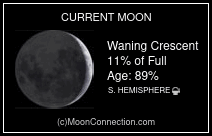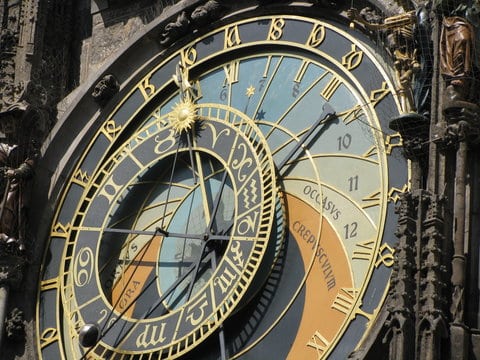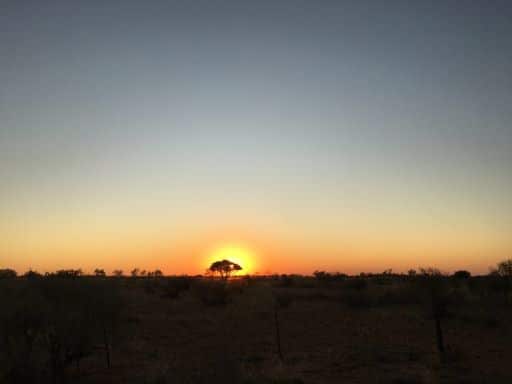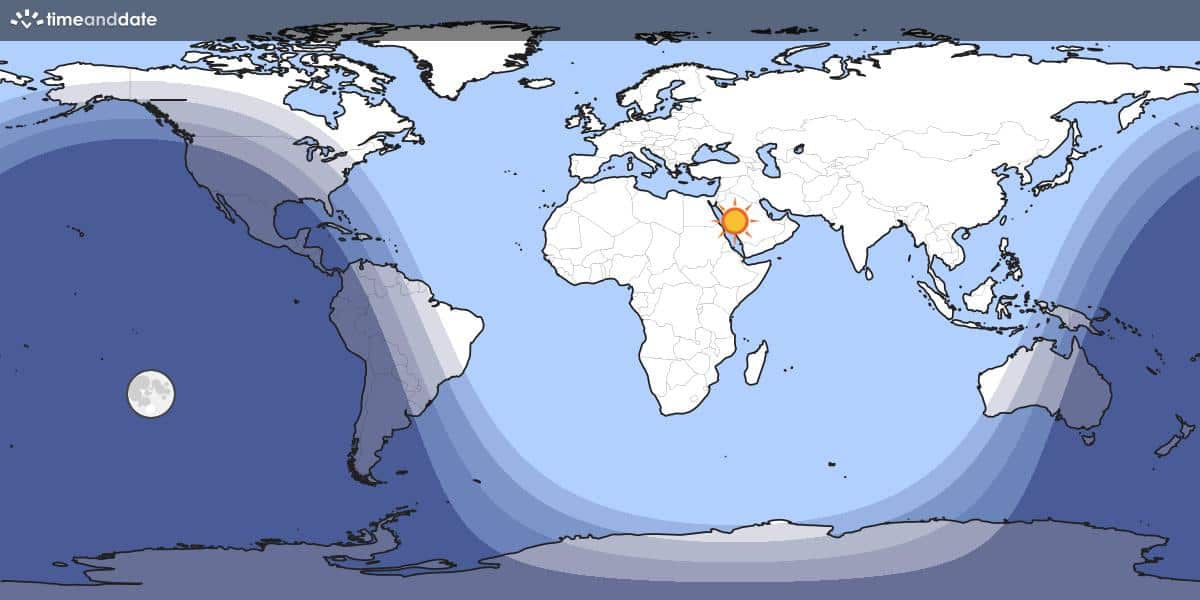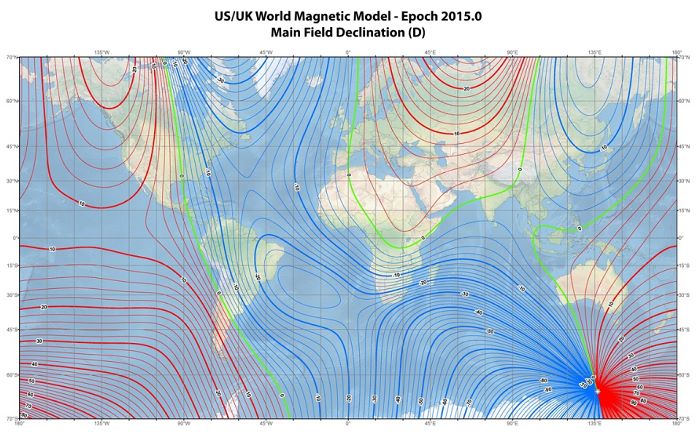Northwest – Chart 1
Steve Gottlieb’s Observations
NGC 1463 = ESO 117-009 = PGC 13807
03 46 15.5 -59 48 37; Ret
V = 13.5; Size 1.4’x1.2′; Surf Br = 13.9; PA = 45°
24″ (4/4/08 – Magellan Observatory, Australia): moderately bright and large at 200x, round, even concentration to a small, brighter core and occasional stellar nucleus. Quite a number of brighter stars are nearby including a group of 7 bright mag 10-11 stars that lie just to the north and two additional mag 11 stars that flank the galaxy 1.8′ SSW and 2.5′ ENE. In addition, the galaxy is 8.5′ NNW of mag 9.7 HD 24060. IC 2010 lies 43′ ESE.
Notes: John Herschel discovered NGC 1463 = h2589 on 6 Oct 1834 and recorded “F, S, R, bM, 15″, one of a constellation with 7 bright stars.” His position (h2589) and description is accurate.
NGC 1529 = ESO 084-004 = PGC 14495
04 07 19.7 -62 53 57; Ret
V = 13.4; Size 1.2’x0.3′; Surf Br = 12.0; PA = 164°
24″ (11/18/12 – Magellan Observatory, Australia): fairly faint, fairly small, elongated 5:2 NNW-SSE, 45″x18″, very small bright core gradually increasing to a stellar nucleus. Forms a pair with brighter NGC 1534 11′ NE. Located 55′ WSW of mag 3.3 Alpha Reticuli.
Notes: John Herschel discovered NGC 1529 = h2619 on 9 Dec 1836 and commented “vF, S, R, gradually brighter in the middle, 15″ dia.”. His position matches ESO 084-004 = PGC 14495, though the galaxy was clearly elongated in the 24″.
NGC 1534 = ESO 084-006 = AM 0408-625 = LGG 110-002 = PGC 14547
04 08 46.2 -62 47 49; Ret
V = 12.8; Size 1.7’x0.8′; Surf Br = 13.0; PA = 76°
24″ (11/18/12 – Magellan Observatory, Australia): moderately bright, fairly small, elongated 2:1 WSW-ENE, 0.8’x0.4′. A mag 13.7 star is at the SE edge, 25″ from center and mag 8.9 HD 26524 is 6.6′ NW. Forms a wide pair with fainter NGC 1529 11.6′ SW. Located 43′ WSW of mag 3.3 Alpha Reticuli. Images show a dust lane on the south side.
Notes: John Herschel discovered NGC 1534 = h2623 on 26 Dec 1834 and recorded “F, S, R. Has a vS star following. Distance 1.5x radius of nebula (by diagram).” His position and description matches ESO 084-006 = PGC 14547.
NGC 1559 = ESO 084-010 = PGC 14814
04 17 35.8 -62 47 01; Ret
V = 10.6; Size 3.5’x2.0′; Surf Br = 12.6; PA = 64°
13.1″ (2/18/04 – Costa Rica): moderately bright, fairly large, elongated 2:1 WSW-ENE, 3.0’x1.5′, broad weak concentration, slightly mottled. A mag 13.5 star is off the SW end, 2′ from center, and a brighter mag 12 star is 4.7′ from center. Located 30′ SE of mag 3.3 Alpha Reticulum and 28′ N of the mag 6.1/7.8 double star Theta Reticulum.
NGC 1559 is a member of the NGC 1672 Group in the Dorado Cloud complex that includes NGC 1672, NGC 1688, NGC 1796 and NGC 1703. Images reveal a number of HII knots, though other than some mottling I didn’t note these.
Notes: James Dunlop discovered NGC 1559 = D 264 = h2634 on 6 Nov 1826. He made two observations with summary description, “faint round nebula, about 40″ diameter, slightly bright to the centre; this is north preceding Theta Rhomboidis”. His published position is 18′ too far south (accurate in RA) as he overestimated the separation from Theta Ret.
John Herschel observed the galaxy twice but didn’t mention an equivalence with D 264, so Dunlop wasn’t credited with the discovery in the GC or NGC. On 9 Dec 1836 (sweep 756), Herschel noted “B, L, mE, very gradually pretty much brighter middle; 90″ l; 40″ br; has a * 14m at the southern edge.”
Pietro Baracchi sketched the galaxy on 7 Dec 1885 using the 48″ Melbourne Telescope. His sketch shows the galaxy fading and narrowing at the northeast end and an apparent tiny knot on the south side.
NGC 1559 was first photographed by Delisle Stewart at Harvard’s Arequipa Station between 1898 and 1901 and described as “!! 3-branch spiral, 2 branches together, giving double appearance.”
Reticulum Cluster = Sèrsic Cluster = ESO 118-031 = KMHK 10 = PGC 15616
04 36 11.0 -58 51 45; Ret
V = 14.7; Size 5.9′
14″ (4/4/16 – Coonabarabran, 145x): the Reticulum Cluster (also called the Reticulum System or Reticulum Dwarf) appeared as a very large, very low surface brightness glow, roughly 3′ in diameter. A few stars are resolved over the glow including a mag 13.5 star near the center, but these are certainly foreground stars superimposed on the cluster. There was no noticeable concentration. A mag 12.5 star is off the northeast side. Located 22′ WNW of mag 7.2 HD 29877 and 1.3° WNW of the bright barred spiral NGC 1672.
The Reticulum Cluster is an ancient, metal-poor globular cluster (one of 15 bona-fide) in the outer halo of the LMC (11.9° NNW of center – 2nd most remote!). It appears to be a low-luminosity Palomar-type with a low central condensation.
Notes: Argentine astronomer José Luis Sèrsic discovered the Reticulum Dwarf in 1973 based on plates taken during 1969 and 1970 with the 0.7m Maksutov camera of the Cerro El Roble Observatory in Chile. In a 1974 paper (1974Ap&SS..28..365S) titled “A list of peculiar galaxies, interacting pairs, groups and clusters south of declination -43°” he described it as a “Dwarf in Reticulum, probably a member of the Local Group. Diameter 8′. Brightest stars at m = 18. Well resolved.”
One of the 15 bona-fide ancient GC’s in the LMC.
Age: 11.5 Gyr (2022 Milone et al: HST survey of Magellanic Cloud clusters).
Distance from the LMC: ~10 kpc (second most distant after NGC 1841)
NGC 1672 = ESO 118-043 = AM 0444-592 = LGG 119-002 = PGC 15941
04 45 42.5 -59 14 50; Dor
V = 9.7; Size 6.6’x5.5′; Surf Br = 13.4; PA = 170°
24″ (4/5/08 – Magellan Observatory, Australia): this gorgeous barred spiral appeared very bright and large with the main body elongated E-W, extending ~3.5’x2.0′. An obvious spiral arm is attached at the east end of the E-W central bar. This arm hooks to the north, wrapping around a superimposed star to the northeast of the bar (1.6′ from the center). Three fainter stars with separations ~30″ are sandwiched to the west of this star, between the arm and the bar. The arm fades out before reaching a mag 10 star 2.2′ NE of center. A second arm begins to emerge on the west side of the bar, barely sweeping towards the south before abruptly terminating. So the second “arm” is just a small hooking appendage off the west end. The central bar itself is sharply concentrated with a dramatic, brilliant nucleus, ~25″ diameter, that increases gradually to the center.
18″ (7/8/02 – Magellan Observatory, Australia): this striking spiral galaxy appeared fairly bright and large, ~4′ diameter, sharply concentrated with a very bright core. A spiral arm clearly emerged from the east side of the oval core or bar. It curled north and wrapped around two stars to the NW of the core. The extension on the west side was just a very faint, diffuse haze on the SW side without a sharply defined arm structure. A mag 9 star is 6.5′ ENE and a mag 6.5 star (HD 30790) is 13′ NE.
13.1″ (2/19/04 – Costa Rica): fairly bright, fairly large, elongated 3:2 ~E-W, ~3’x2′. Sharply concentrated with a very small, bright core, ~20″ diameter, and a large oval halo. Spiral structure was evident as an ill-defined extension or haze off the NE side, though I could not resolve this spiral arm clearly. Situated directly between two mag 9 stars 10′ SW and 6.5′ ENE. Located 30′ NNE of mag 5.3 Kappa Doradus. This galaxy is a member of the Dorado group, which includes NGC 1515, NGC 1533, NGC 1536, NGC 1543, NGC 1546, NGC 1553, NGC 1566, NGC 1574, NGC 1596, NGC 1617 and IC 2056. Possible additional members include NGC 1559, NGC 1602, NGC 1672, NGC 1688, NGC 1703 and NGC 1705.
Notes: James Dunlop discovered NGC 1672 = D 296 = h2665 on 5 Nov 1826. He described “a faint ill-defined nebula about 50″ diameter, irregularly round with a small bright point near the preceding side, which I suspect to be a star; a pretty bright star about 20′ south-preceding [mag 5.3 Kappa Dor] and also another following [mag 6.8 HD 30790].”
John Herschel made two observations, the first on 4 Dec 1834 (sweep 519) when he described it as “B, L, pmE, suddenly very much brighter middle to a nucleus; 2.5′ long, 1.5′ broad; a star 12th mag involved.” His position was accurate.
Joseph Turner sketched NGC 1672 on 5 Dec 1876 with the 48″ Great Melbourne Telescope but there was no indication of spiral structure (unpublished lithograph plate II, figure 16). NGC 1672 was first photographed by Delisle Stewart at Harvard’s Arequipa Station between 1898 and 1901 and described as “!! 2-branch spiral, irregular figure.”
NGC 1688 = ESO 119-006 = AM 0447-595 = LGG 119-003 = PGC 16050
04 48 23.5 -59 47 57; Dor
V = 12.0; Size 2.4’x1.9′; Surf Br = 13.4; PA = 177°
13.1″ (2/19/04 – Costa Rica): fairly faint to moderately bright, elongated 3:2 NNW-SSE, 1.5’x1.0′, broad weak concentration but no other details were evident. This barred spiral is located 38′ SE of NGC 1672 38′ NW with NGC 1703 34′ E. Located 30′ ESE of mag 5.3 Kappa Doradus.
Notes: John Herschel discovered NGC 1688 = h2671 on 4 Dec 1834 and recorded “vF; pL; R; gradually brighter in the middle; 50″.” On later sweeps he called this nebula “B” and “pB”. His position is accurate.
Joseph Turner made a sketch on 5 Dec 1876 with the 48″ Great Melbourne Telescope with the object shown as a narrow streak NW-SE, so he noticed the full length of the central bar (page 121 of logbook). There was some mistake in preparing the lithograph (unpublished plate II, figure 17) which shows two elongated streaks along with additional stars.



